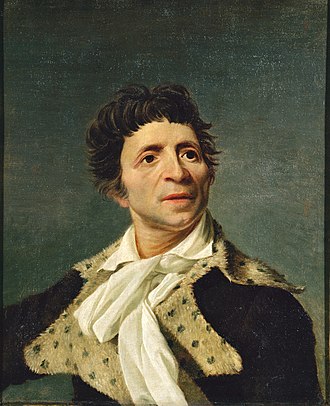 John-Paul Marat
John-Paul Marat His journalism was renowned for its fierce tone, advocacy of basic human rights for the poorest members of society, and uncompromising stance toward the new leaders and institutions of the revolution. Responsibility for the September massacres has been attributed to him, given his position of authority at the time and an alleged paper trail of decisions leading up to the massacres. Yet others argue that the collective mentality that made them possible resulted from circumstances and not from the will of any particular individual. Marat was assassinated by Charlotte Corday, a Girondin sympathizer, while taking a medicinal bath for his debilitating skin condition. Corday was executed four days later for his assassination, on 17 July 1793.
In death, Marat became an icon to the Jacobins and a revolutionary martyr: according to contemporary accounts some even mourned him with a kind of prayer: "O heart of Jesus! O sacred heart of Marat". The most famous painter in Paris, Jacques-Louis David, immortalized Marat in his iconic painting The Death of Marat. David and Marat were part of the Paris Commune leadership anchored in the Cordeliers section, from where the Revolution is said to have started in 1789 because those who stormed the Bastille lived there. Both David and Marat were on the Commune's Committee of General Security during the beginnings of what would be known as the Reign of Terror.
 RSS Feed
RSS Feed